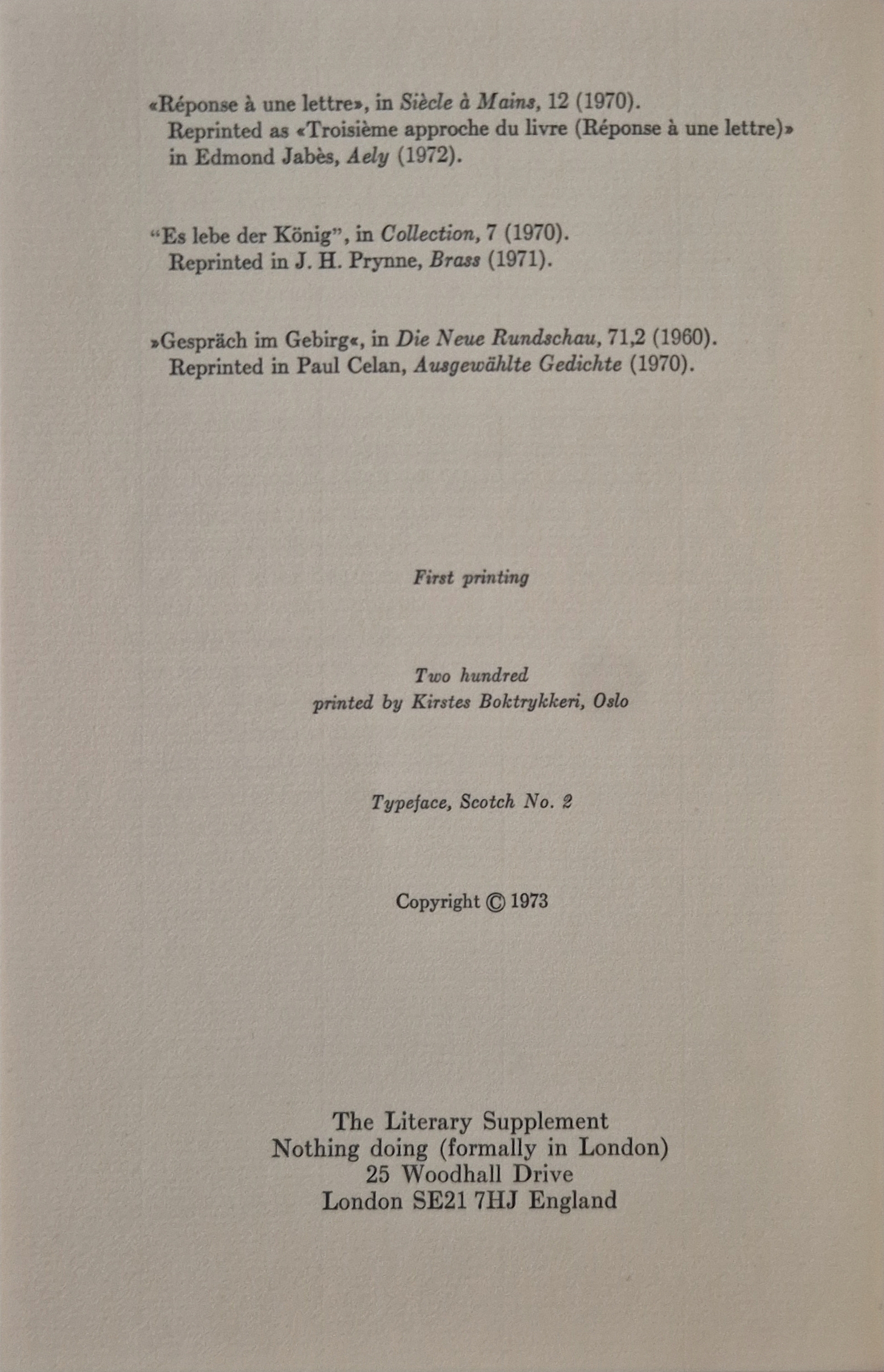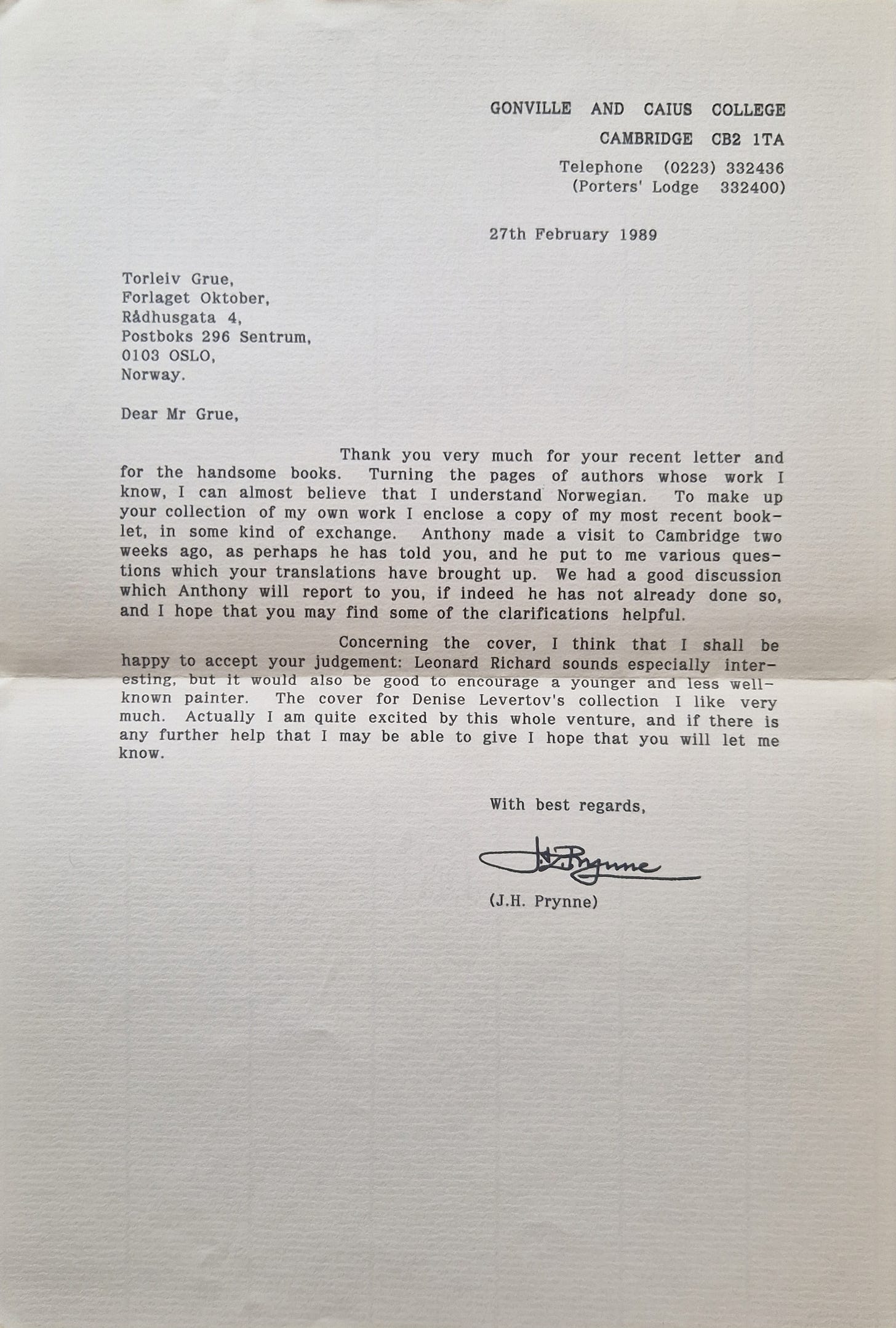Last year, the Scottish poet, Gerry Loose died unexpectedly. As any reader of my book Pacemaker will know, Gerry’s work looms large in my personal poetic universe. As with so many poets, I first encountered his work in Cork as a student, going in the summertime to the SoundEye Festival.
Gerry’s engagement with the natural world, was one that was not lazily mystic in its treatment of our place within it, but symbiotic.
His last collection, without title, is out now and the title poem is indeed subtitled "poems for the symbiocene”. He lived in Rothesay on the isle of Bute, but had lived many places, and was someone with a true world view. One of the poems in this final collection, “notes towards a Pavilion for Listening to Rain”, reminded me of another book on my nightstand, The Study: The Inner Life of Renaissance Libraries by Andrew Hui which brings into the conversation about Renaissance Libraries and the idea of the study as it emerged in Europe then, the kind of contemplative spaces and studies - including pavilions - common in Chinese culture of the same and earlier eras. This is from “notes towards a Pavilion for Listening to Rain”:
Rain is a chorale. It is after Bach and before Bach, after oriole and before oriole. It’s in the pauses, the caesuras, in tears from the twin oceans of samsara and life before life.
Ten thousand years of salt, bitter tears offered to the gods of war, to Mars, to Guan Yu, and to Castor and Pollux too, are given back:
sweetened, balm of rain.
You can buy Gerry Loose’s without title from Shearsman here.
I’ve written previously about Norlis Antikvariat, a bookshop in the centre of Oslo, and in which often find odd gems. This week, on Monday, on St. Patrick’s Day, with some extra time on my hands, I made my way there after a coffee in the Kaffebrenneriet which is right next door. Skulking as I inevitably do up to the second floor where there is a select set of English language books, I noticed a fuller than usual poetry section, which included several early City Lights Books from the famous Pocket Poets Series. I also noticed a number of very slim chapbooks with stapled and saddle-stitched binding and began flicking through them when I saw one of the most recognisable names in contemporary British poetry (or at least of the last 50 or so years, if that’s contemporary): JH Prynne.
Prynne is a famously difficult poet. He is a poet I find occasionally very difficult to read, but I still persist with him because even when it seems at its most abstruse, there is some kernel of something there that challenges and excites in equal measure. He is also famously productive, and many if not most of his books are privately printed volumes. Here suddenly I found not one, but three Prynne books. It was clear from the presence of these, plus the other books, including the City Lights books, that a serious reader of poetry had probably died in Oslo not long ago. My inkling proved to be correct.
I bought all three of the books: A first edition of Kitchen Poems from 1968, it is one of the 2,000 soft cover first editions (another 700 were case bound, and 50 of those signed and numbered). The second book was one of the 200 second impressions of Bands Around the Throat from 1987. This is signed with a dedication:
For Torleiv Grue,
with regards and best wishes,
JH Prynne
Cambridge, 27th February 1989
In my haste and happiness at finding the books, I didn’t inspect them all too closely. The third book was Literary Supplement, Writings, 1 which includes short pieces by Edmond Jabes and Paul Celan Englished by Rosemarie Waldrop and a piece by Prynne Es Lebe Der Konig, from 1970 and dedicated to Celan, who took his life that year. The curious thing about this little supplement is that this is a first printing of two hundred copies, but it was printed by Kirstes Boktrykkeri in Oslo. This printing house, founded in 1908 by a German-born Max Richard Kirste who had come to Norway in 1897, existed until the year 2000.
Once I got in from town, I opened again Bands Around the Throat and a piece of paper fell out that had been in the centre of the book and which I had missed when picking it up. It is a letter, typed and signed by Prynne, to his Norwegian translator Torleiv Grue, who published Sand og kobber, a selection of Prynne’s works in Norwegian which was published by Forlaget Oktober in 1989. Among the things the letters touch on are the cover artwork for the translation.
Torleiv Grue died in August 2024. He had been involved in FOrlaget Oktober for much of the 1980s, and in addition to bringing Prynne into Norwegian, he also published a selected translation of Charles Olson. Following his departure from Oktober, he eventually founded Kolon Forlag, perhaps the best known publisher of poetry in Norway today.
This is all information I have gleaned since finding these three volumes by complete accident yesterday. I think of it all as testament to the porousness of poetry.








That would certainly have been Anthony Barnett. He lived in NorwY for a while, edited a magazine called The Literary Supplement (of which your tbird purchase was an offshoot).
David, would you believe that I used your wonderful book, 'Pacemaker', as part of a writing workshop yesterday in Co. Wexford! Such serendipity to find your post now and to learn of your found treasure. I must check out those poets.